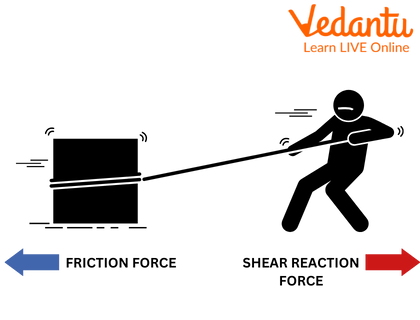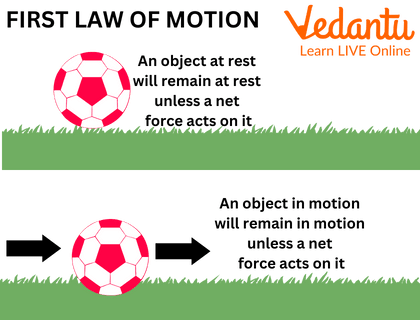




Must-know Facts About Motion in Physics
Any object or body which changes its place or position with respect to the time is said to be in motion. For example, even in our day-to-day life, we walk or drive cars, or lift objects. Performing all these tasks requires the input of some type of force. This force was first described scientifically by Issac Newton and we study it under a branch of physics termed Mechanics.
In this article we will learn about motion, the laws of motion as given by Issac Newton and then some fun and interesting facts about motion and its laws followed by learning a few facts about circular motion.

Motion in Physics
Common Facts About Motion
Any type of motion requires at least some kind of force as an input.
Force can be defined as a phenomenon that pushes or pulls any object.
An object which is in motion, for example when we drive a car, experiences a repelling force from the ground known as friction.
Friction is helpful because it helps the car in slowing down and eventually stopping.

Force and Friction
Fun Facts about Newton’s Laws of Motion

Sir Issac Newton
There are three laws of motion and these were given by Newton.
Isaac Newton is also the founder of calculus.
The first law talks about inertia and will be discussed in detail a little later in this article.
The second law gives the relation between the force applied and the momentum of a body.
The third law is termed as the action reaction law; it states that for every action there is an equal and opposite reaction.
It said that Newton discovered gravity when an apple fell on him while he was sitting under an apple tree.
What Is the First Law of Motion?
The first law of motion as given by Isaac Newton is known as the Law of Inertia. Inertia is a repelling force that resists the motion of any object in consideration. The law states that when a body is at rest it will remain at rest until an external force is applied to it. It also states that a body in motion will remain in motion until some external force is applied to it to stop its motion.

First Law: Law of Inertia
The tendency of a body to remain in its state, may it be a state of rest or state of motion, and avoid any changes is known as inertia. We mainly have three different types of inertia:
Inertia of Rest
Inertia of Motion
Inertia of Direction
Facts About Circular Motion

Example of Circular Motion
Some facts about circular motion are mentioned below:
When a body is moving in a circular path, it is said to be in a circular motion.
Some examples of circular motion are: when you walk around the circumference of a circular park or garden and the earth that revolves around the sun.
We have two types of circular motion: uniform circular motion and nonuniform circular motion.
During circular motion, as the body is moving along a circular path, it has a constant speed throughout its motion. This is defined as uniform circular motion.
However, the velocity changes direction at every point of motion. We say that the speed of the body is constant but the velocity of the body is not constant.
In non uniform circular motion, speed is changing with time.
Sample Questions
State whether the statements mentioned below are correctly stated or not:
1. The laws of motion were given by Isaac Newton.
Ans: True, the laws of motion were given by Issac Newton.
2. There are in total five laws of motion.
Ans: False. There are in total three laws of motion
3. We study motion and its characteristics in the subject called Chemistry.
Ans: False. We study motion and its characteristics in a subject called Physics.
4. Circular motion is when an object is covering a circular path.
Ans: True, circular motion is when an object is covering a circular path.
5. In a uniform circular motion, both the speed and the velocity of the object are constant.
Ans: False, in a uniform circular motion the speed is constant but the velocity keeps on changing.
Practice Questions
Complete the statements that follow but fill in the blanks with the most suitable answer:
1. Motion is studied under a branch of physics known as _________
Ans: Mechanics
2. There are _______ laws of motion
Ans: 3
3. The laws of motion were given by __________
Ans: Isaac Newton
4. The first law of motion is the law of __________
Ans: Inertia
5. Action Reaction law is the __________ law of motion.
Ans: Third
6. The _________ is constant in uniform circular motion.
Ans: speed
Summary
Whenever an object on a body changes its location with respect to the time, it is said to be in a state of motion. For any body or object to start its motion, some type of external force is required as an input. Sir Isaac Newton gave three laws of motion which are studied under a branch known as mechanics in Physics. The first law is the law of inertia and the second law gives the relation between the force applied and the motion of the body. The third law is known as the action-reaction law. A body is said to be in a circular motion when it is moving along a circular path. We have two different types of circular motion: uniform circular motion and non-uniform circular motion.
FAQs on Facts About Motion - Learning About Newton’s Laws of Motion
1. Explain the third law of motion
The third law of motion is the action-reaction law. It states that for every action, there is an equal and opposite reaction. For example, when we are walking, our body applies a force on the ground and the ground applies an equal but opposite force on our body which allows us to walk.
2. What do you understand by motion?
When the location of an object or a body changes with respect to the time, it is said to be in a state of motion.
3. When can we say a body is in a circular motion?
We can say that a body is in a circular motion when it is travelling along a circular path.









